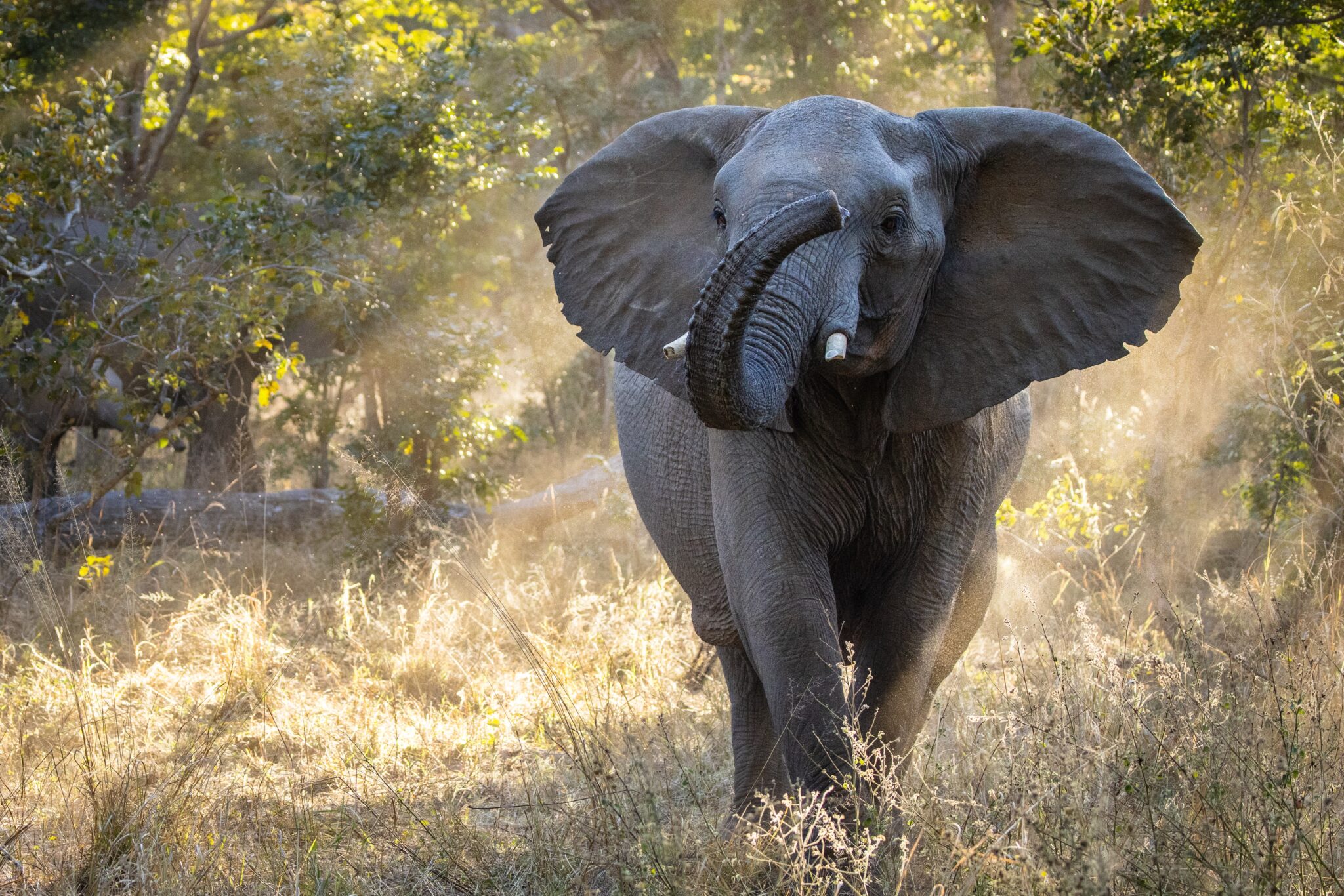Visitors can take part in cultural tours and visit traditional villages to learn about the customs and way of life of the local people.
Hwange National Park is located in western Zimbabwe and is known for its diverse wildlife and stunning landscapes. The park covers an area of over 14,650 square kilometers and is home to a wide variety of animals, including elephants, lions, leopards, giraffes, zebras, and many species of birds.
One of the main attractions of Hwange National Park is its large elephant population. The park is home to over 44,000 elephants, making it one of the largest elephant populations in Africa. Visitors can take a guided safari tour to see the elephants up close and learn about their behavior and habits.
In addition to its wildlife, Hwange National Park also offers visitors the opportunity to experience the unique culture and traditions of the local communities. Visitors can take part in cultural tours and visit traditional villages to learn about the customs and way of life of the local people.
Hwange National Park also offers visitors a variety of activities, including game drives, walking safaris, bird watching, and camping. The park has several campsites and lodges that provide comfortable accommodations for visitors, as well as restaurants and gift shops.
Overall, Hwange National Park is a must-visit destination for anyone interested in wildlife and adventure. With its diverse wildlife, stunning landscapes, and rich cultural heritage, it offers visitors a truly unforgettable experience.
Wildlife in Hwange National Park
Hwange National Park is known for its diverse and abundant wildlife. The park is home to a wide variety of animals, including:
- Elephants: Hwange National Park has one of the largest elephant populations in Africa, with over 44,000 elephants roaming the park. Visitors can take a guided safari tour to see the elephants up close and learn about their behavior and habits.
- Lions: Hwange National Park is home to a large population of lions, which can be spotted on game drives and walking safaris. Visitors can also learn about the park’s lion conservation efforts.
- Leopards: The park has a good population of leopards, which are elusive and hard to spot but can be seen if you are lucky.
- Giraffes: Visitors can see giraffes grazing in the park’s open grasslands.
- Zebras: The park has a large population of zebras, which can be seen on game drives and walking safaris.
- Birds: Hwange National Park is also a birdwatcher’s paradise, with over 400 species of birds, including eagles, vultures, and many species of waterfowl.
Overall, Hwange National Park offers visitors the opportunity to see a wide variety of wildlife in their natural habitat, making it a true wildlife lover’s paradise.
Climate in Hwange National Park
Hwange National Park is located in western Zimbabwe and has a semi-arid climate. The park experiences a hot and dry climate throughout the year, with temperatures typically ranging from 20°C to 35°C (68°F to 95°F).
The park has two main seasons, the rainy season and the dry season. The rainy season, which typically runs from November to April, is characterized by occasional thunderstorms and high humidity. During this time, the park’s vegetation is lush and green, and wildlife congregates around the water sources.
The dry season, which runs from May to October, is characterized by hot and dry weather, with little rainfall. During this time, the park’s vegetation is dry and the wildlife concentrates around the waterholes that are supplied by the park.
Overall, the best time to plan your Hwange safari is during the dry season when the wildlife congregates around the water sources and it is easier to spot animals. The park can be hot during the day, but it can be more comfortable to spot animals during the early morning and late afternoon.
What to pack on a safari to Hwange National Park
When packing for a safari in Hwange National Park, it’s important to consider the climate and the activities you’ll be doing. Here are some essential items to pack for your trip:
- Comfortable and breathable clothing: Pack clothes that are light, loose-fitting, and made of natural fibers such as cotton or linen. Avoid bright colors and stick to neutral tones as they blend well with the environment.
- Sun protection: Pack a wide-brimmed hat, sunglasses, sunscreen, and lip balm to protect yourself from the sun.
- Footwear: Pack comfortable and sturdy footwear, such as hiking boots or closed-toe shoes for game drives, walking safaris, and bird watching.
- Camera and binoculars: Pack your camera and binoculars to capture the stunning landscapes and wildlife of the park.
- Insect repellent: Pack insect repellent to protect yourself from mosquitoes and other insects.
- Personal hygiene items: Pack basic personal hygiene items such as soap, shampoo, toothbrush, and toothpaste.
- Water bottles: Pack a refillable water bottle to stay hydrated throughout the day
- First Aid kit: Pack a basic first-aid kit including pain relievers, band-aids, and any personal medications.
Flashlight or headlamp: Pack a flashlight or headlamp for evening game drives and camping - Cash: Pack some cash as some places in the park may not accept credit cards.
It’s also worth checking with your tour operator or the park authorities to see if there are any specific items you should bring for the activities you will be doing.
























































































































































































































